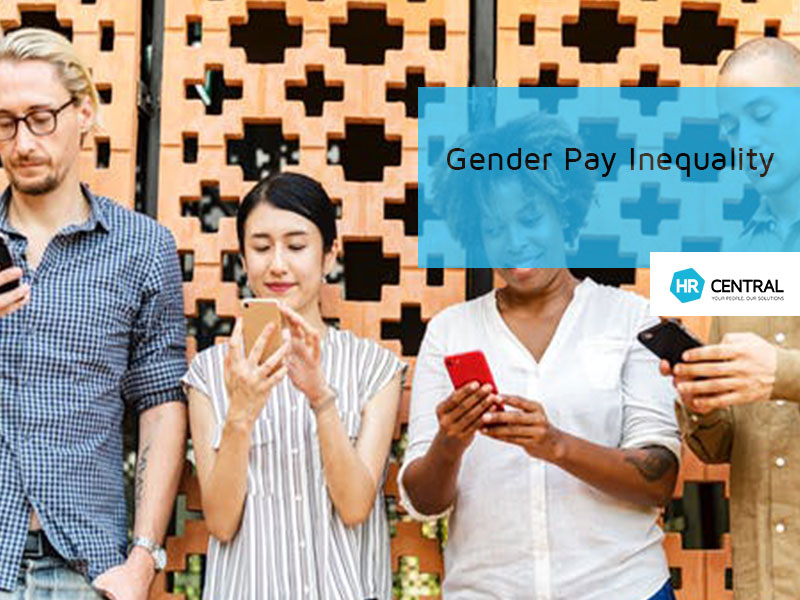In the last year there has been a lot of coverage in the media about the gender pay gap. It was rumoured that morning TV host Lisa Wilkinson jumped ship to Channel Ten after she found that her co-host at Channel Nine, Karl Stefanovic, was being paid significantly more for doing the same job. In March this year a large energy group committed to fixing their gender pay gap ‘overnight’, spending $1.2m to increase the pay packets of 350 women it had paid less than their male colleagues doing the same work.
Clearly there is huge potential for gender pay inequity in large corporates but what do small business owners need to know?
What is the gender pay equity?
Gender pay equity ensures equality of pay for men and women performing the same role and equitable pay for women and men performing different work of equal or comparative value.
The gender pay gap is the difference between the average weekly full- time earnings of men and women, expressed as a percentage of men’s earnings. In Australia the gap is 15.3% in favour of men, and unfortunately this discrepancy in men’s favour is a common trend internationally.
What are some of the factors that contribute to gender pay inequity?
- Women do a lot of unpaid caring and domestic work
- Industries that are ‘female dominated’ are often less well paid. For example, child care and social work
- Business has been slow to give the flexibility needed by women to accommodate other responsibilities such as caring for families and elderly parents, particularly at a senior level
- Women have less access to workplace training
- There is still significant discrimination and bias against women in the recruitment process and pay decisions – For more information see our blog about unconscious bias. Men are commonly seen as strong, resilient, ambitious and assertive and women as good communicators, nurturing and supportive. These generalisations mean women are sometimes seen as less ambitious and overlooked for managerial positions and other opportunities.
- Women generally spend more time out of the workforce and often return part time which can negatively affect their career progression and opportunities. There also tend to be limited opportunities for senior part time roles.
What are the issues for small business?
It can be tricky for small businesses to ensure equity in managing women and men. For a start they may not have the resources, such as a dedicated HR person to develop strategies around gender or collate data to see if the business is treating men and women equally. Small businesses may also be limited in their capacity to provide a broad range of flexible work options or be more greatly impacted by parental leave. They may also be reliant on part time or casual workers. Women constitute 68.6% of all part time employees in Australia and 52.6% of all casual employees[1].
Here are some examples of ways in which small businesses may engage in gender pay inequity:
- Paying women returning from maternity leave the same rate they were on prior to taking leave even though they are performing at the same level as their more highly paid male equivalents
- Paying part time workers (who are predominantly women) less than pro rata because they are grateful for part time work options which can be hard to find
- Actively seeking part time workers because they cost less
- Paying award rate in female dominated industries and above award rate in male dominated industries
- Paying men more because men are often more assertive in negotiating increases in remuneration, whereas women may be less confident in negotiating a rise
Why is it important?
There are many reasons why all businesses should aspire to gender pay equity. Firstly, from a moral perspective it demonstrates that you are an employer who values and respects your staff regardless of their gender. A workforce that is happy, loyal and motivated is a positive thing – and makes it easier to attract and retain good staff. Studies have shown that workplaces that are committed to ensuring equity in pay for women and men are more productive and perform better.
There are also legal imperatives. Under the Workplace Gender Equality Act 2012 all non- government organisations with 100 or more employees are required to report annually on a set of gender equality indicators. Small businesses (defined as businesses with less than 100 employees) are exempt from this reporting. As we have seen in recent months with the various wage scandals in the news, businesses that underpay their staff are also liable for legal sanctions under the Fair Work Act and can find themselves defending discrimination claims. We all know the businesses that are renowned for paying staff poorly – and we don’t want to work for them- so the reputational costs can also be considerable.
If you are interested in conducting a review of salaries or developing best practice initiatives and need some advice HR Central can assist. Contact us on 1300 717 721
[1] Workplace Gender Equality Agency Statistics February 2018

